| Sarah L. Hunt-Frank | Tom Sawyer Director: | Jeff Frank Designer: | Sarah L. Hunt-Frank Lighting: | Michael Rourke Costumes: | Tina Campbell HOME | 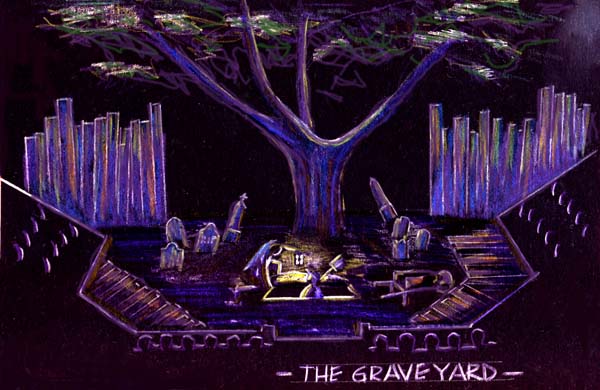
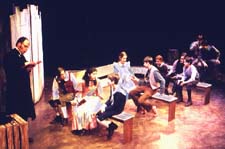 As the director and I discussed the play, we kept coming back to the
fence. We had the inspiration that the fence represented the confines
of proper society, and | 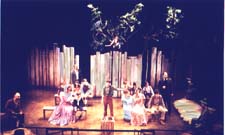
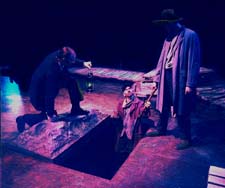 Tom, with his creative and adventurous soul,
would find ways of breaking out of that barrier. The fence would
literally transform to help tell Tom’s story. There would be a gate for
Aunt Polly to enter, but a loose board for Tom and his cousin, Sid, to
shinny through. Also large extensions of the fence unlatched and laid
down on the stage floor to reveal tombstones for the haunting graveyard
scene. The biggest challenge was creating the cave. For this, I
designed several removable pieces of the fence that protruded into the
playing space and created obstacles and the “mixed up crookedness” of
the avenues in the cavern. The young performers wandered in and out of
the field of vision, creating a feeling of mystery and adventure.
| The fence itself was a character in it’s own right. The boards were
varied in spacing and length and degree of angle. There was even a
knothole in one. | 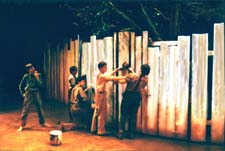
| “Tom Sawyer is about fences -- those that restrict, those that protect -- and how we interact with them. Sometimes we climb them or wiggle to freedom though a broken slat. At other times, we huddle inside while enemies batter the gates.
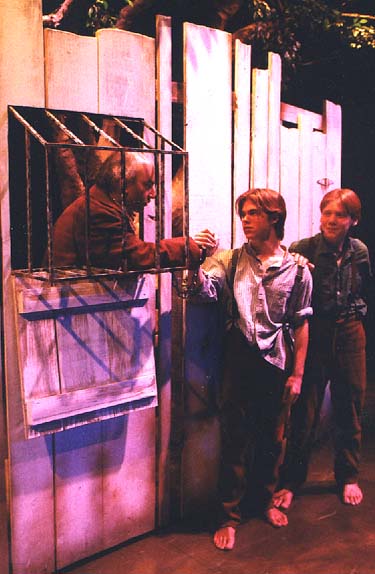
The script . . . receives a real boost from Sarah Hunt-Frank’s smart
intuitive set. For the entire play, the stage is dominated by an
enormous picket fence. It’s weather-beaten and not all the slats match
up perfectly, but most of the time it does the job it’s supposed to do
--just like the laws governing society. |
During a scene set in Sunday school, some slats are removed and double
as benches. During the climactic scene in the cave, the fence breaks
apart and forms stalagmites behind which the children hide. The fence
is omnipresent; it served different functions, but the characters never
escape from it.” |
--Mary Carole McCauley, Milwaukee Journal Sentinel 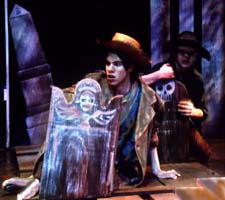
“Director Jeff Frank makes great use of a wonderfully ingenious stage design. Scenic designer Sarah L. Hunt-Frank... ... is to be given great credit for designing the great old picket fence that dominated the set. “One minute Tom is whitewashing it and another planks are pulled out of it to make benches for a courtroom or a classroom. It is also easily converted into a graveyard and cave. “The fence is also the symbol of both Tom’s limits and possibilities --at one time closing doors on mischief and at another it is a swinging gate for growth and opportunity that is as wide and abundant as his gap-toothed grin.” -- Steven Tiets, CNI, March 12, 1999
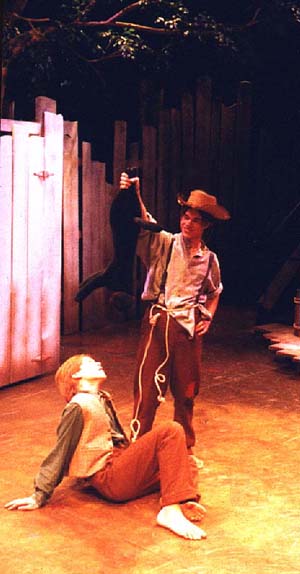
| ||||||||||||||||||||||||||||||||||||||||||||||||||||||||||||